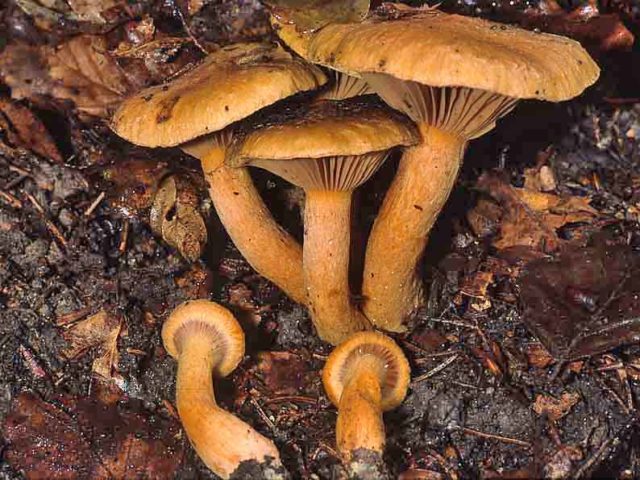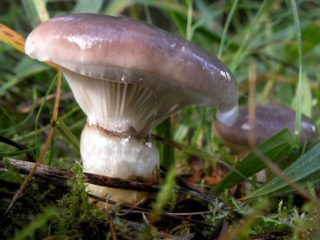Content
The Swiss weed or tomentose yellowleg is a member of the Gomphidiaceae family. This species is not particularly popular among lovers of quiet hunting, since many, out of ignorance, mistake it for an inedible mushroom. In official sources it can be found under the name Chroogomphus helveticus.
What do Swiss moths look like?
The upper part of the Swiss morukha is dry, convex in shape, and ocher in color. Its diameter is 3-7 cm. The surface of the cap is velvety, the edge is smooth. When ripe, its shape is retained.
On the reverse side of the cap there are sparse branched plates that descend onto the stem.In young specimens they are ocher in color, and as the mushroom matures they acquire a black tint.
The leg is elongated and cylindrical. Its height can reach 10 cm, and its cut diameter is 1.5 cm. At the base, the lower part narrows slightly. The color of the stem is identical to that of the cap. Between the upper and lower parts there is a fibrous blanket that covers the plates. This feature is inherent only in young specimens.
The pulp of the fruiting body is distinguished by its high density and fibrous structure. Its color is orange, at the break it quickly turns red when in contact with air. The smell of the pulp is faint.

The shape of the fruiting body is standard: with a clearly defined cap and stem.
Swiss spindle-shaped moth has spores. Their size reaches 17-20 x 5-7 microns. When ripe, the spore powder becomes olive-brown in color.
Where do Swiss moths grow?
This species can be found in mountainous areas. Prefers coniferous forests, and can also occasionally be found in mixed plantings.
Swiss weed grows both singly and in small groups.
Is it possible to eat Swiss moths?
This species is considered conditionally edible. The taste is average, so in terms of nutritional value it is classified in the fourth category.
False doubles
In terms of external features, the felt yellowlegs is in many ways similar to its close relatives. Therefore, in order to recognize doubles, it is necessary to study their characteristic differences.
Similar types:
- Mokrukha felt. The peculiarity of this species is that its cap is covered with white pubescence. In addition, the upper part is divided into lobes. The official name is Chroogomphus tomentosus. Classified as edible.
The flesh of the felt mokruha is dense, ocher in color, and when it dries it becomes pinkish-wine.
- Wet purple. This double can be recognized by the smooth surface of the upper part. And also the color of the fruiting body is reddish-orange, in contrast to the ocher color of the Swiss one. The official name is Chroogomphus rutilus. Classified as edible.
The plates of the purple moth are wide, extending beyond the leg
Collection rules
Mushroom harvesting can be done from June to October. It is recommended to make the preparation from young specimens, since when ripening the taste quality decreases noticeably. You need to cut at the base of the fruiting body so as not to damage the mycelium.
Use
Before consuming Swiss mocha, it must first be boiled. After cleaning, you can fry, marinate, stew. This mushroom does not require long-term heat treatment. The cooking time should not exceed 15-30 minutes, otherwise the taste of the future dish may deteriorate.
Conclusion
Swiss weed is a little-known mushroom that rarely ends up in the baskets of lovers of quiet hunting. The taste is not inferior to many common types, so the low level of popularity can only be explained by ignorance of mushroom pickers. In the northern regions of China it is considered a delicacy, and many dishes are prepared based on it. However, when consuming it, you need to observe moderation to avoid a feeling of heaviness in the stomach.










